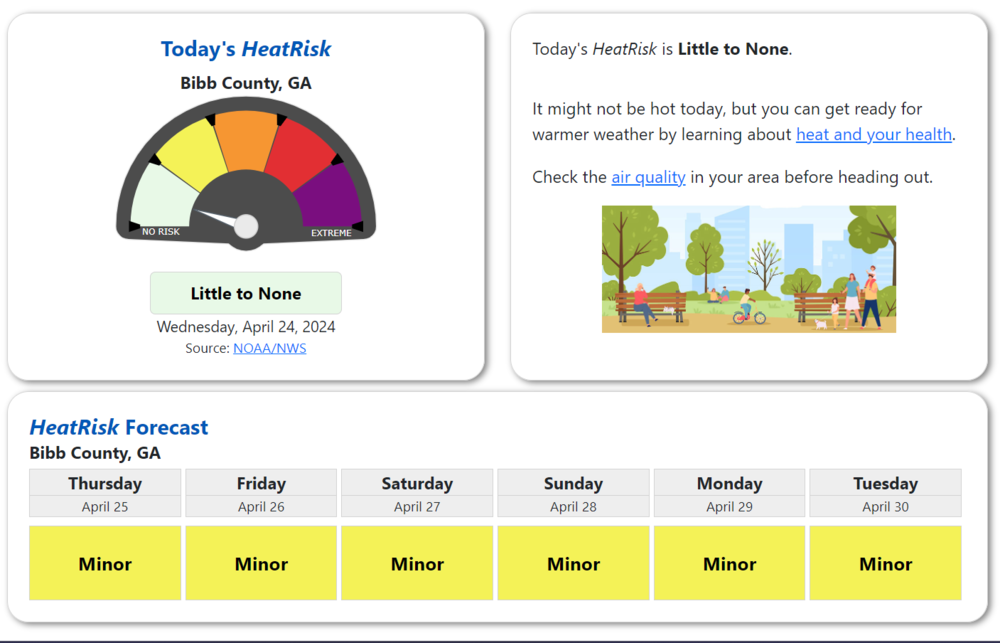
Section Branding
Header Content
In preparation for rising temperatures, health care providers access new tools to monitor heat risks
Hero Image

Primary Content
LISTEN: The Centers for Disease Control and Prevention and the National Weather Service are pushing out tools released this week to help limit heat-related injuries. GPB's Sofi Gratas reports.

Last year was the hottest on record, and climate scientists say temperatures this year could top that.
Dealing with these dangers on the frontline are health care providers.
Ahead of the summer months, the Centers for Disease Control and Prevention and National Weather Service are pushing out tools this week to help limit heat-related injuries.
The HeatRisk tools include a seven-day risk forecast localized by ZIP code and new clinical resources with guidance for children, pregnant people and those on medication or who are chronically ill.
Atlanta-based CDC officials presented the new tools on Tuesday during a conference on Agriculture Worker Health hosted by the National Association of Community Health Centers.
“I think the purpose of the tools is to help people understand how hot is too hot, and there's not a certain number,” said Laura Seeff, senior medical advisor at the CDC’s National Center for Environmental Health.
Risk in the forecast tool is classified by shades of white to dark purple, and based on data linking outside temperature and emergency room visits nationwide. But it also takes into account variants in temperature on any given day, because unexpected heat elevates risk.
Outdoor workers spending hours in the sun are most likely to end up hospitalized or injured from heat.
“One of the ways we want to see this used is by promoting a conversation and action between doctor and patient, ideally before the heat season starts,” Seeff said.
Specifically, the aim is to reach community health centers: federally funded providers that provide safety-net care. Georgia has 35 such providers with varying reach regionally.
Janeth Terry does outreach for East Georgia Healthcare Center, based in Swainsboro. Its mobile clinics reach thousands of farm workers every season, visiting fields in Toombs, Candler and Tattnall Counties on the hottest days.
With the new CDC tool, Terry said workers and physicians can get an early warning about dangerous conditions.
“It's people in our community; they die from heat strokes and stuff like that,” Terry said. “So it is really important. They can know what they need to be doing or what they can [do to] prevent this.”
The mobile clinics meet farm workers where they’re at — in fields, packing houses or farmworker housing — to provide check-ups and medication. And they always provide education on how to stay protected from the heat.
“It gives the farmer a healthy workforce and also prevents emergency room misuse,” said CEO of East Georgia Healthcare Center Jennie Wren Denmark. “We can prevent the cost of health care and to our state by treating people to begin with.”
According to the National Center for Farmworker Justice, there are over 20,000 agricultural workers in Georgia. The majority come through the state's H-2A Visa Program for Temporary Workers, and though they are eligible for health care insurance, often experience language barriers or issues in getting that coverage secured.
These workers are also not guaranteed protections from heat, like mandated water or rest breaks on hot days. While some states have enacted such protections, Georgia is not one of them, and an alluded to federal mandate has been slow in becoming official.

